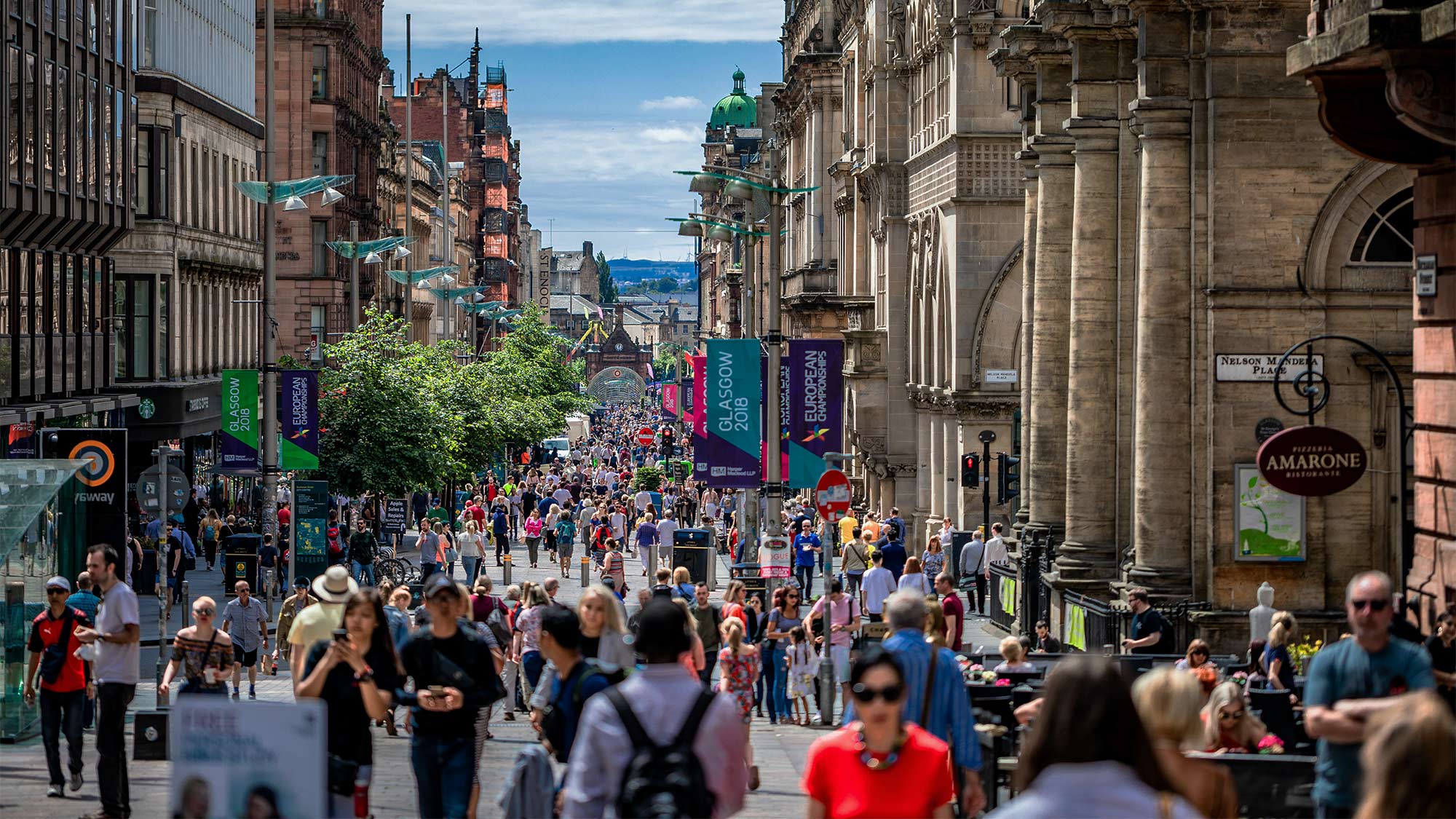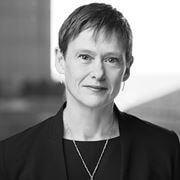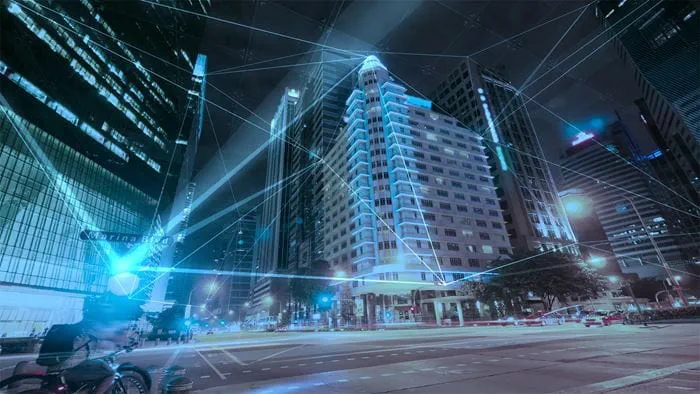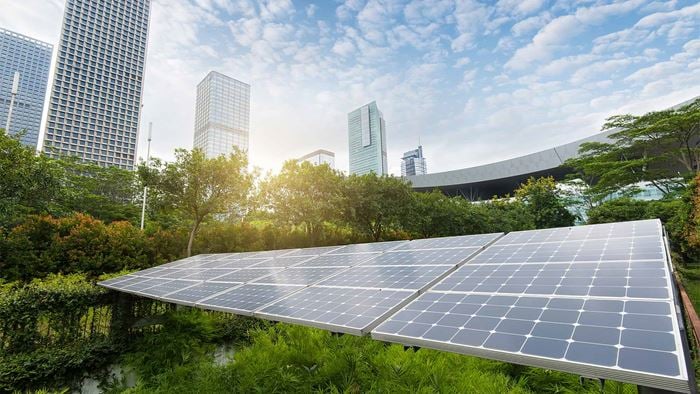Following the UN Climate Change Conference in 2015, climate actors across governing bodies, businesses, nonprofits, and research institutions came together to commit to a carbon-neutral world by 2050. Five years after the signing of the Paris Agreement, individuals, jurisdictions, and organizations of all scales have worked to begin the transformation necessary to check climate change and its worst impacts — but we have a long way to go to achieve our net-zero-carbon economy vision.
As the COP26 summit commences, Arup Fellows Fiona Cousins and Erin McConahey and Arup Americas Director of Cities and Sustainable Real Estate Brian Swett together reflect on the role of the AEC industry in achieving net zero, the next practicable steps for climate action, and how we can ensure our carbon-neutral future is equitable and just.
How has the AEC industry stepped up to deliver on the commitments made in the Paris Agreement toward a net-zero future?
Brian: Since Paris, I think the AEC industry has shown that engineering is not going to be the barrier to decarbonizing the built environment. By and large, the technology is there or about to be there. The challenge lies in transforming our energy supply to be carbon neutral. Our success in decarbonizing the built environment is going to involve a whole lot of electrification of our existing building stock and infrastructure, and our transmission and distribution systems are not set up for that modification of the grid at an unprecedented scale. And green power may not be ready to supply that electricity in a cost-effective way fast enough to meet the demands of electrification.
Erin: Our industry has been an early leader of the formalized codes and standards that emphasize decarbonization in earnest. Architecture 2030, ASHRAE, and the New Buildings Institute have each pushed both the research on and advocacy for new energy standards for practitioners to adopt.
In the last three to four years, we’ve also seen a rise in embodied carbon awareness in the United States. In the past, we’ve been focused on energy efficiency, which is directly related to operational carbon. Now we’re paying attention to the other half of the carbon equation. Structural engineers, through platforms like SE2050, have come forward to own the effects and emissions of cement and the embodied carbon in our supply chains. Low-carbon concrete codes have already been adopted in some Bay Area counties in California and I expect other areas to follow.
What does the next phase of climate action look like?
Fiona: As we move to the next phase for the AEC industry, I think we are going to see three main changes. Firstly, as Erin says, there will be more emphasis on embodied carbon and the circular economy; secondly, we will see a shift to policy and legislation that mandates changes in existing buildings because that’s where most of the impact is, especially around electrification; and thirdly, we will see social and environmental justice become strong drivers of climate action.
Brian: We’ve had the opportunity to work on a variety of progressive policies at the state and local level. I think more and more people are realizing that the hope and optimism around incentive-based programs bump against the challenges of rollout and adoption. We’ve set commitments, jurisdictions have their interim deadlines, now the programs need to catch up. All the delivery actors, from large firms like Arup to small mom-and-pop HVAC shops, need to know that every time they’re replacing a piece of equipment, there's an opportunity for greater efficiency or electrification. We’re going to have to take fossil fuel-based technologies and equipment out of the distribution and replacement supply chain over time. As fossil fuel-free alternatives become available, we will have to steadily remove the availability of fossil fuel-based equipment that has no future in a decarbonized built environment.
Another policy change I think we’re going to see over the next decade is moving away from measuring kilowatt-hours and instead measuring tons of carbon emissions. Traditionally, building codes regulated energy, and this became a proxy for measuring progress on emissions reduction. The reality is they’re sometimes in alignment, but not always. Now, we need to set buildings up for success from the get-go. We don’t have time for multiple conversions to electrification. Emissions have to be what we’re prioritizing now, and more and more buildings codes and regulatory policies are starting to get that.
Erin: In California and a dozen other states, we are seeing property-assessed clean energy (PACE) loans for energy improvements, which could be expanded to cover electrification. The loan is attached to the mortgage and the property itself as opposed to the person who is applying for it, so the cost burden is spread out over time and from owner to owner. At least for smaller-scale, residential owners these loans could support quicker conversion without a huge cost hit.
We do have a tendency when creating policies to pair one-time cash incentives that cover first costs with annualized penalties if you don’t convert. For residential properties, I think we need to look at broader tax and insurance structures to find ways to reduce the overall cost of ownership of your building if you’ve taken the first step on behalf of the common good to decarbonize your property.
What hurdles arise as cities and other entities aim to shoulder the weight of building decarbonization?
Brian: Cities and real estate players have been predominantly focused on the demand side of energy efficiency and electrification — how energy is being used. But cities and large-scale owners are going to have to use their market and political power on the supply side — ensuring that enough green electricity supply is available to meet their future energy demand. In speaking with our clients, their concerns aren’t necessarily in electrifying their buildings, but in being able to buy green power at scale and for a reasonable cost. That piece of the puzzle isn’t in place yet in many parts of the country.
Fiona: We’ve heard a similar theme in New York. Real estate players are saying, “I’m happy to reduce my emissions by electrifying, but I don’t believe the electricity is going to be there.” If they electrify and there’s no green power available, that’s not helping anyone. At least in New York, plans to decarbonize the grid are robust and well-advanced, but it’s a still a concern we hear again and again.
And different cities have different levers for change: some cities control their local utilities while others do not, which means that some cities are much more able to act on the supply side.
Erin: A parallel issue can be found in the supply chain. I can tell you right now that there are not enough heat pumps produced in the United States to support this conversion. In order to have a wide-scale transformation of our supply chain, we need to make it beneficial to convert the technology being produced through the guarantee of bulk purchasing contracts from cities. With the guarantee of knowing where the supply chain is going over the next 15 years, there will be enough impetus within the supply chain’s organizations to make the change. If we don’t start having these conversations with the supply chain, we won’t have enough equipment to actually pull off a net-zero carbon future.
Like Brian said, we have to take a system-wide point of view because changing any single element is insufficient. Alignment and collaboration across sectors is the only path forward.
Brian: The federal government has been a productive actor in incentivizing technology improvements as both a large-scale purchaser and setter of energy standards. To do something similar from an emissions standpoint seems like a natural extension for the Biden Administration. If you set an emissions-performance standard for buildings, you can define what success looks like including at the equipment scale. Then, to compete for these large-scale government contracts, you have to comply with their progressive standards. It would create a marketplace for that investment, not only in the technology sector but in manufacturing as well.
As designers in the built environment, how can we ensure the pathways to a net-zero future are equitable?
Fiona: We have to first be aware of where the unevenness lies. For a while, it was “green bling.” Basically, you could be zero net carbon if you had enough money to get there. It was a way to establish your position in the market. Now, as renewables get integrated into the infrastructure grid, we’re getting to a place where everyone can benefit, not just those who can afford to install solar power at their buildings.
It's also essential to establish why decarbonization is so critical for everyone. There are always competing priorities: Why are we focusing on changing the grid when people don’t have enough to eat? We have to lead with, and then maximize, the co-benefits of decarbonizing — air quality and safety considerations — otherwise our net-zero future won’t be equitable.
Brian: Part of the solution is to make economic and racial justice a lens on 100% of our decarbonization and energy efficiency programs. For example, the Low-Income Home Energy Assistance Program (LIHEAP) subsidizes those still using oil heat in the Northeast, because if you can’t pay for the oil truck to fill your tank, then you don’t have heat, which is untenable. We spend hundreds of millions of dollars on that program every year, often supporting the same households annually, but don’t ask ourselves if we should be converting them to cleaner natural gas or electric heat pumps. By doing so, we’d make progress from both a public health and emissions standpoint. Instead, we put Band-Aids on social justice issues without addressing the root cause or spending money wisely.
As we’ve learned through our conversations about equity, justice, and the environment , engaging with our local communities directly is also critical for success. By partnering with community-based organizations, we can better understand what’s feasible and co-develop implementable solutions that address energy efficiency and decarbonization in conjunction with economic and racial justice.
Erin: It’s important to bear in mind that changing our energy sourcing infrastructure is costly. Up until the point that we’re 100% renewable, operating with a free sun as opposed to costly fuel, we have to pay off the capital cost of that transition. That means that as we make this transition, we need to invest in our vulnerable communities. Electricity can’t be so costly that the elderly or those with low mobility can’t afford their air conditioning. And as Brian mentioned, the reverse is true in the winter.
As demonstrated by the New York City Housing Authority’s 2021 Sustainability Agenda update, we have opportunities to embed equity in our sustainability commitments and funding options are available to enable balanced access. It’s up to us as designers, policymakers, and city leaders to address this investment interplay and meet our long-term adaptation goals.
 ;
;





